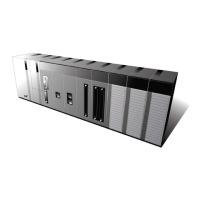The low voltage direction requires a device that operates with AC50~1000V, DC 75 ~ 1500V to have proper safety. The followings
summarize the cautions for installing and wiring PLC of the XGT series to comply with the low voltage directions. The description is the
data based on the applicable requirements and specifications as far as we know but it does not mean that every system
manufactured according to the description meets the following specifications. The method and determination to comply with the EMC
directions should be finally determined by the system manufacturer self.
11.2.1 Specifications applicable to XGT series
XGT series follow the EN6100-1(safety of the device used in measurement/control lab).
XGT series is developed in accordance with the above specifications, even for a module operating at the rated voltage higher than
AC50V/DC75V.
11.2.2 Selection of XGT series PLC
(1) Power module
The power module of which rated input voltage is AC110/220V may have dangerous voltage(higher than 42.4V peak) inside it,
so any CE mark compliance product is insulated between the primary and the secondary.
(2) I/O module
The I/O module of which rated voltage is AC110/220V may have dangerous voltage(higher than 42.4V peak) inside it, so
any CE mark compliance product is insulated between the primary and the secondary. The I/O module lower than DC24V
is not applicable to the low voltage directions.
(3) CPU Module, Base unit
The modules use DC5V, 3.3V circuits, so they are not applicable to the low voltage directions.
(4) Special module, Communication module
The modules use the rated voltage less than DC 24V, so they are not applicable to the low voltage directions.

